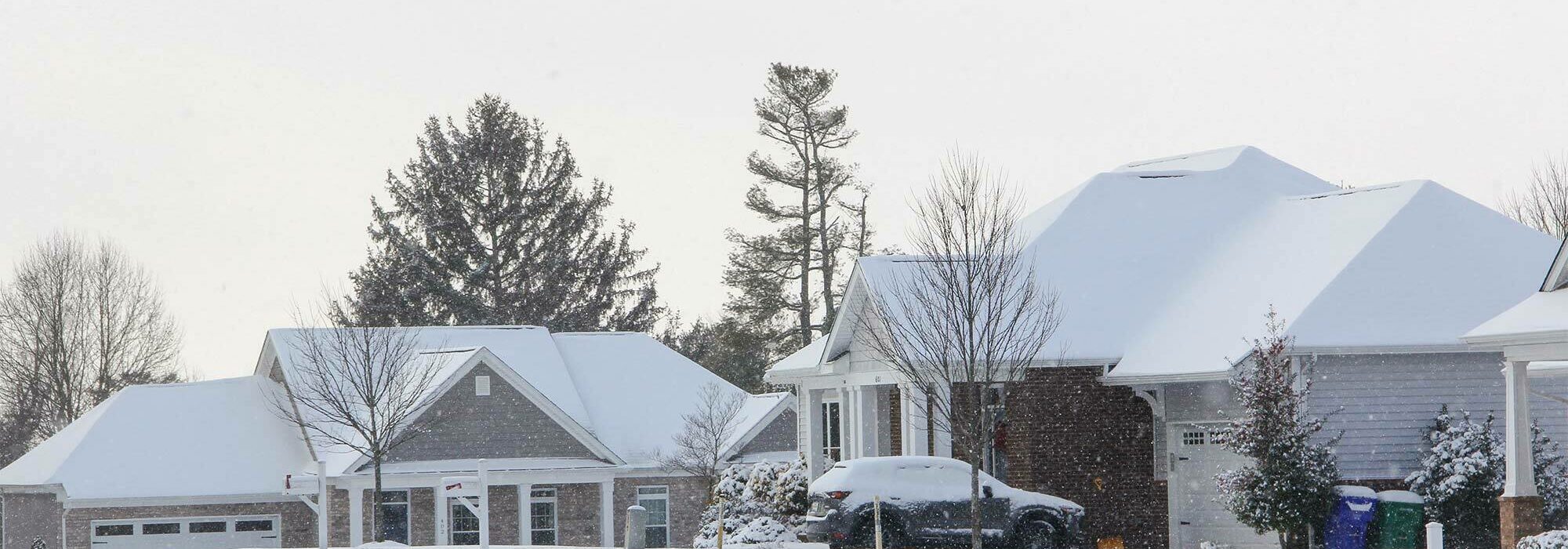Article Excerpt
Texas winters are unpredictable. Temperatures go from freezing to warm and back again. Here are a few ways winter weather can damage your home.
It’s not unusual during winter months for temperatures to drop below freezing at night and reach the 60s or 70s by the following afternoon. As the saying goes: “if you don’t like the weather in Texas, just wait a few hours.”
Severe winter storms in recent years, however, have lasted for days and caused billions of dollars in damage to people’s homes and property. Preparing your home for winter weather in Texas can be something of a guessing game as you try to decide what areas most need your attention. Every house is unique and has distinct needs. No two homes need the exact same preparation for winter.
In order to know what you should do for your home, it helps to know about the kinds of damage that could occur from winter weather. Prepare your home accordingly.
Cracked Foundation and Other Concrete
Winter can damage concrete in several ways. Concrete is responsive to temperature changes. It can experience a phenomenon called thermal expansion when the weather is warm and thermal contraction when it’s cold out. Water expands when it freezes. These two phenomena do not work well together. Repeated shifts between warm and freezing temperatures can put stress on concrete, especially if there is any water on, in, or around the concrete. This can damage slab foundations, driveways, sidewalks, and other concrete structures.
The cycle of freezes and thaws can worsen existing cracks, too. Water collects in the cracks, and as the temperature drops, the concrete shrinks as the water expands. The cracks get bigger. Then the temperatures rise again, and the cycle repeats until spring.
Lengthy periods of freezing weather can also damage concrete foundations. This is not as common in Texas, but it’s not impossible. The edges of a foundation are exposed to the elements, which means they get colder than the part at the center of the house. Thermal contraction around the edges can lead to cracking, followed by the cycle of further damage described above.

Burst Pipes
Pipe damage during freezes might be the most well-known type of winter weather damage for Texas homeowners. Since temperatures still spend more time above freezing than below during the winter in most parts of Texas, few houses have insulated pipes. A variety of products are available to help homeowners protect their plumbing from freezing. Areas of concern include outdoor hose bibs, outdoor sinks, and indoor sink pipes located along an outer wall of the house.

Water Heater Damage
Your plumbing is not the only system in your home that could be vulnerable to cold weather. Most new water heaters have built-in protections against the cold, but nothing is ever guaranteed to work perfectly.
Whether you have electricity or gas service during a winter storm may determine whether you will have problems with your water heater. Both tankless and tank-style water heaters should work fine as long as you have power. A lengthy power outage coupled with freezing temperatures, however, could cause problems.
Tank-style water heaters that use natural gas might be able to continue operating without electricity, as long as you still have gas. If both power and gas go out, the tank has insulation to prevent freezing. The sheer mass of the tank should also hold off a freeze for a while. You’d have to be without power or water and in sustained freezing conditions for quite some time before the tank would be in trouble.

Roof Damage
Your roof faces multiple risks in freezing weather. Wind in a winter storm could damage shingles or flashing, or it could cause tree limbs to fall and damage the roof. Tree limbs can also fall under the weight of ice or snow. Storms can deposit large amounts of snow, sleet, or ice on your roof. The weight can cause damage.
Water poses many dangers to your roof. Any kind of water buildup on or around the roof can become disastrous in freezing temperatures. Water can expand into ice and create gaps between or under shingles, create cracks in chimneys, or harm the flashing.
Don’t let a little cold scare you away from home ownership!
You invested a substantial amount of resources and took on big responsibilities when you became a homeowner. It’s scary to think that something could go wrong. Thankfully, a caring mortgage lender and real estate agent team can guide you into choosing home warranties and insurance that protect against catastrophic damages and expenses.
What’s scarier than a Texas winter storm is the idea of missing out on all the benefits that come with home ownership! Fill out a few simple questions online and we’ll get with you to decide on your best mortgage options.



